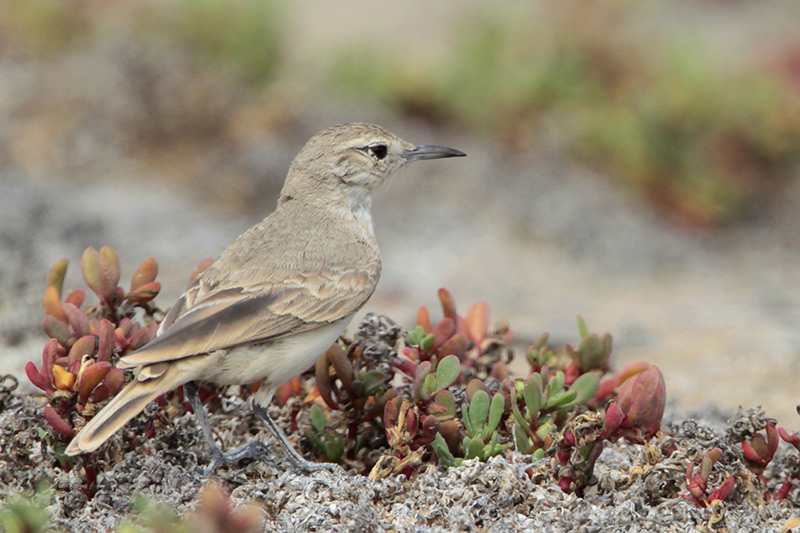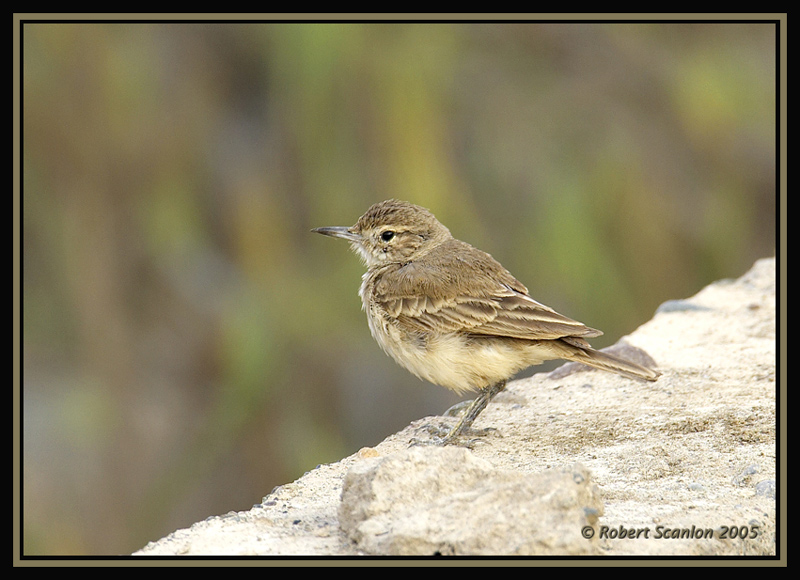
Geositta peruviana
SUBFAMILY
Furnariinae
TAXONOMY
Geositta peruviana Lafresnaye, 1847.
OTHER COMMON NAMES
French: Gйositte du Pйerou; German: Kьstenerdhacker; Spanish:
Caminera de la Costa.
PHYSICAL CHARACTERISTICS
Body length is about 5.5 in (14 cm). Bill is short, slightly
downcurved, and pointed. The sexes are similar. The tail is
moderately short, and overall coloration is light gray-brown,
with a whitish belly and throat, and a light stripe over the eye.
DISTRIBUTION
Occurs in coastal regions of western Peru.
HABITAT
Occurs in open, arid, often-sandy, desert-like barrens of the Pacific
coast. habitat ranges from almost non-vegetated to having
scattered shrubs. Occurs as high as about 1,300 ft (400 m).
BEHAVIOR
A non-migratory species. Usually occurs singly or in pairs. Defends
a breeding territory. The song is given by the male during
a hovering display flight and is a lengthy, musical
twittering.
FEEDING ECOLOGY AND DIET
Forages actively by running and hopping on the ground, seeking
its food of insects and other small invertebrates. Sometimes
perches in low shrubs or on walls of buildings.
REPRODUCTIVE BIOLOGY
Builds an oven-shaped nest out of clay. Both the male and female
incubate the eggs and rear the nestlings.
CONSERVATION STATUS
Not threatened. A locally abundant species.
SIGNIFICANCE TO HUMANS
None known.
Photo Gallery of - Coastal miner




 Animalia Life
Animalia Life